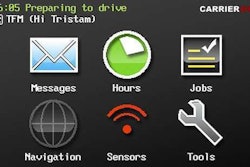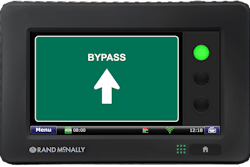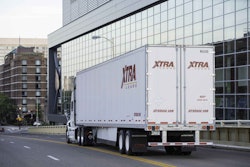
Note: This is the second of a two-part series that looks at the advantages of leasing and buying a truck and/or trailer. Part one, “Own or lease: Cash flexibility and tax benefits” can be found here.
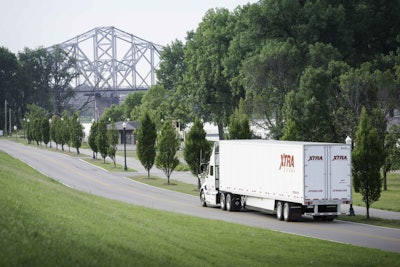
But the used truck market is fickle with units gaining or losing several thousand dollars in value in just a few years, or anytime the market becomes saturated with units of a similar spec.
“If you buy that trailer, you’re stuck with that asset,” says XTRA Lease Senior Vice President Steve Zaborowski. “You’re at the mercy at whatever the market is if you decide to sell those trailers off.”
Todd Berger, Paccar Leasing Company’s director of national accounts, says often the financial implications of leasing – no money down versus 10 percent – is met with the ongoing concern of residual values at the end of the term.
“Today’s trucks are becoming obsolete quicker than they ever have before,” adds Penske Truck Leasing Senior Vice President of Sales Jim Lager. “All the technological changes and advancements make that truck less desirable quicker than it used to.”
For fleets willing to roll the dice on owning and selling units, the upside payoff can be big.
Fleets that opt to lease miss out on a hot used market, but they also insulate themselves from valuation instability.
“At the end [of the lease term], I just get to turn in the truck,” says Bill McMenamin, Navistar President of Financial Services and Treasurer. “As long as I turn in the truck according to terms and conditions, that’s all I have to do. As compared to if you own the truck – and then you want to swap out the truck for a new truck at the end of that period – you now have to sell the truck, it has to be part of a trade package, and I have the upside/downside risk of the equipment value. Some fleets like to lock in and know what their costs will be upon exit.”
Business conditions are constantly changing – freight rates fluctuate and customers come and go – which can leave fleets scrambling to find more equipment or looking to shed a surplus.
“Most [carriers] don’t really get very long-term contracts from shippers,” adds Zaborowski, “so, length of contract is certainly a big driver for a lot of our customers.”
Berger says lease accounts are reviewed annually and if an uptick in business pushes a company over the annual mileage agreed to in the lease, those terms can be amended without significant penalty.
“We don’t try and make money on a mileage variance,” says Jason Leon, group director, product management for Ryder ChoiceLease, “we just try to get it right at the end of its term.”
Conversely, if fleet loses a customer and finds they have more equipment than business, Berger says a leasing agent could aid fleets in taking those units back and moving them to other customers who have seen an uptick in business.
“This happened in 2008 and 2009 considerably,” he says. “There’s a lot of flexibility mid-term. If we have a customer and that operation changes, we can adapt and redeploy.”
Leon says Ryder would work with a customer to put those units back to work, including entering them into the company’s peer-to-peer asset sharing platform, COOP. COOP allows the original lessee to generate revenue from underutilized vehicles by renting them to fleets in need of extra capacity.
“We understand the fluidity of customer relationship contracts,” Leon says. “We wouldn’t just force them to pay.”
NationaLease Senior Vice President of National Account Sales Joe Gallick says it benefits both parties to address business issues along the milestones of a lease agreement versus at the end, “because if you wait until the end you’re incurring additional maintenance and you’re risking the resale value of the equipment based upon you’re exceeding the manufactures’ extended maintenance warranties,” he says. “It behooves both parties to regularly to look at, assess and make the adjustments as needed.”
Maintenance
Full-service leasing allows fleets to lean on specialized maintenance expertise that may not otherwise be readily accessible and focus on what they do best: moving freight.
Fifty-seven percent of the respondents to the NPTC survey indicated they were entered into a full-service lease agreement.
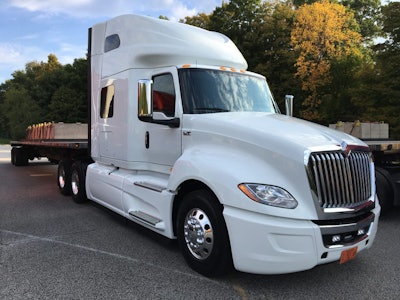
Leon says smaller applications driving limited miles, returning to base daily and who have a dedicated maintenance partner are most likely to be drawn to an ownership model.
“You’re in your hometown and you probably have a really good relationship with your dealer,” he says. “I can see how that world sees that example as something they should own instead of lease.”
However, by considering a unit’s total cost of ownership – adding up every little thing that keeps a truck on the road – Leon says leasing can make a lot of sense for any application.
“Total cost of ownership is really the big driver. It’s the number one reason people buy versus lease,” Leon says, noting when you add in things washing, loaner assets, tolls, licensing, preventive maintenance and managing vehicle delivery – all things covered under a full-service lease – that benefits gap can narrow substantially. “They’re just so many things that [fleets] don’t put value to.”
A fixed rate lease can also eliminate maintenance-related expense forecasting since those costs are baked into the monthly payment.
“[A full-service lease] takes out that element of the customer having to have an internal shop or schedule multiple providers,” Gallick says. “When you buy your truck, you’ve got to set all these up.”
However, lease terms will help define the truck’s maintenance cycle, which is why the case for truck ownership is strongest among operations who handle all their own maintenance in-house.
Under the terms of a full-service lease, all maintenance is bundled into the rate over the duration of the lease term. Since the lessor owns the truck, they’ll want to ensure it’s properly maintained to their standard.
“We want to be part of all that,” Lager says, noting Penske sets a preventive maintenance schedule based on the truck’s duty cycle. “We’re going to want to touch that truck at least every 90 days, but our goal is to only touch the truck when it’s due for preventive maintenance.”
Since the exposure of the maintenance expense is on the lessor, Lager says there’s less incentive for fleets to turn over trucks quickly and leasing agencies work with the customer to determine trucks specs and lease terms.
“[Fleets] need the use of that asset. They don’t necessarily want the truck. They want what the truck can do for them” he says. “In most cases, they let us tailor that lease in terms of the length of term and unit inspection. They let us tell them what works best and in some cases that’s a shorter term lease and in some cases it’s a longer term. To them, they’re getting a consistent payment, a consistent expense – all that variability, we take that out of the equation – and they have use of the truck.”
For smaller fleets, a major downtime event can be catastrophic, but leasing a truck from a large company opens up the cumulative of all their experience.
“We tend to see events occurring well in advance because of the size of our fleet,” Lager says. “We knew the 2012s were going to be a tough model year to maintain. They were going to have a lot of issues and we started working with customers to get them out of those trucks.”
Lessees also have exclusive access to the lessor’s maintenance network, which in some cases is expansive.
“They don’t pull in and get in line behind other repairs,” Lager says. “They pull in and get service work.”
Access to repair facilities, Lager says, has become a big deal as trucks become harder to work on and harder to diagnose.
“[Fleets] can’t hire the technicians. They can’t train the technicians,” he says. “The software to diagnose to do anything to trucks today is very expensive.”
Access to equipment
Leasing can unlock a network of trucks for fleets in the event of unplanned downtime.
“You think ‘I’m going to buy a truck and I’m going to have it 100 percent of the time’ and that’s not true,” Lager says. “Availability is probably more like 80 percent when you own a truck.”
Lager says availability rates for lease customers exceeds 90 percent because when a truck goes down, a substitute is provided by the lessor.
“What the customer ends up with is more uptime, better availability,” he says. “If you’re in an ownership model, that’s a lot harder to accomplish many times.”
With truck and trailer backlogs nearly full through the rest of this year, a lease is many fleet’s only option to acquire a truck quickly unless they already have one on order or can pull one directly off the dealership lot.
“Trailer orders have been through the roof,” Zaborowski says. The NPTC survey showed leased fleets were five times more likely to use leasing for trailer acquisition. “We have thousands of trailers available every month that are coming off the line this year. If you wanted to buy, you’re going to be waiting a long, long time for that and your freight may disappear with the tight capacity that we have out there today.”
Fleets can also use leasing to validate new equipment and technology without having to invest in the infrastructure to support it.
For example, Zaborowski says XTRA Lease went standard last year with air disc brakes.
“If you’re a fleet and you want to understand how air disc brakes perform before making an investment in your own spec, you can lease,” he says. “It gives you the ability to sort of experiment with it without you having to take the risk with investment dollars.”



